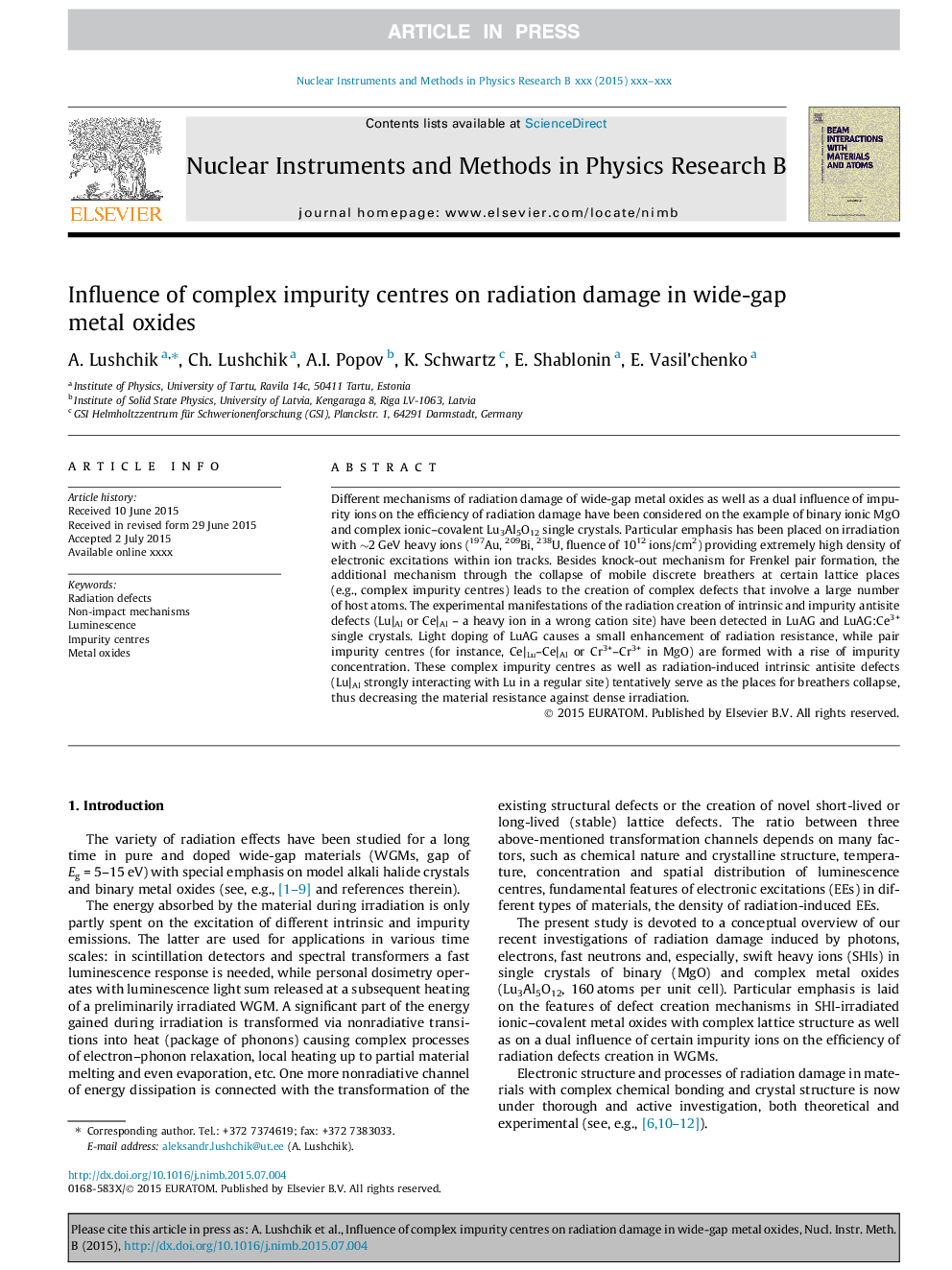| Article ID | Journal | Published Year | Pages | File Type |
|---|---|---|---|---|
| 8039920 | Nuclear Instruments and Methods in Physics Research Section B: Beam Interactions with Materials and Atoms | 2016 | 7 Pages |
Abstract
Different mechanisms of radiation damage of wide-gap metal oxides as well as a dual influence of impurity ions on the efficiency of radiation damage have been considered on the example of binary ionic MgO and complex ionic-covalent Lu3Al5O12 single crystals. Particular emphasis has been placed on irradiation with â¼2Â GeV heavy ions (197Au, 209Bi, 238U, fluence of 1012Â ions/cm2) providing extremely high density of electronic excitations within ion tracks. Besides knock-out mechanism for Frenkel pair formation, the additional mechanism through the collapse of mobile discrete breathers at certain lattice places (e.g., complex impurity centres) leads to the creation of complex defects that involve a large number of host atoms. The experimental manifestations of the radiation creation of intrinsic and impurity antisite defects (Lu|Al or Ce|Al - a heavy ion in a wrong cation site) have been detected in LuAG and LuAG:Ce3+ single crystals. Light doping of LuAG causes a small enhancement of radiation resistance, while pair impurity centres (for instance, Ce|Lu-Ce|Al or Cr3+-Cr3+ in MgO) are formed with a rise of impurity concentration. These complex impurity centres as well as radiation-induced intrinsic antisite defects (Lu|Al strongly interacting with Lu in a regular site) tentatively serve as the places for breathers collapse, thus decreasing the material resistance against dense irradiation.
Related Topics
Physical Sciences and Engineering
Materials Science
Surfaces, Coatings and Films
Authors
A. Lushchik, Ch. Lushchik, A.I. Popov, K. Schwartz, E. Shablonin, E. Vasil'chenko,
